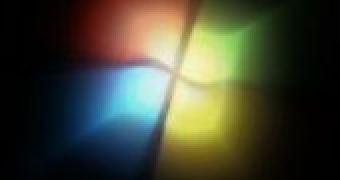Just as it was the case for Windows Vista, Microsoft’s latest iteration of the Windows client can also be uninstalled, although “uninstall” does not specifically describe the process that end users will need to take in order to revert to a previously existing copy of a Windows OS. At the same time, also as for its predecessor, Windows 7 can only be removed and the previous Windows platform reinstated in a single installation scenario. Namely, uninstalling the latest version of the operating system is only possible if users installed Windows 7 as a new installation over an earlier version of Windows in the first place.
Obviously, clean installs of Windows 7, where no old OS existed on the hard drive, cannot be uninstalled. The same is valid for users that opted to upgrade from Windows Vista to Windows 7, as well as for those who created multi-boot configurations, deploying Windows 7 alongside older Windows releases.
Uninstalling Windows 7 is only possible if “You used the Windows 7 installation media to install Windows 7 to the same hard disk drive on which you had Windows XP, Windows Vista, or another version of Windows 7 installed. In this scenario, the Windows 7 installation will have created a Windows.old folder that contains your previous operating system and personal files. This Windows.old folder is in the root of the Windows partition,” Microsoft noted.
It is critical to note that users will also need the Windows.old folder. There are various tutorials that advise customers to delete the Windows.old folder following the installation of Windows 7 in order to retrieve the space it occupies on the system partition. If the Windows.old folder was indeed removed and cannot be restored, the uninstall process of Windows 7 is not possible.
In the context in which users kept the Windows.old folder, it also needs to be of a certain size in order for the uninstall to work “If the Windows.old folder is two times as large as the free space that is available for the Local Disk (C:) entry, you may be unable to restore the previous Windows installation,” Microsoft informed.
For those users with systems that fit the description and conditions enumerated above Microsoft has enumerated the necessary steps that need to be taken in order to uninstall Windows 7 and revert to the older copy of Windows previously installed on the computer:
"
Start the Windows Recovery Environment
- Put the Windows 7 installation disc in the DVD drive, and then restart the computer. Press a key when you are prompted to restart from the disc. In the Install Windows window, select a language, a time, a currency, a keyboard input method or other input method, and then click Next. - In the Install Windows window, click Repair your computer. In the System Recovery Options window, click the version of the Windows 7 operating system that you want to repair, and then click Next. In the System Recovery Options window, click Command Prompt. The Command Prompt window opens, and it displays the command prompt. The command prompt is where you will type the commands that are described in the following steps.
Move the Windows 7 folders to a new Win7 folder - When you type one or more of the commands at the command prompt in the following steps and press ENTER, you may receive the following message: “The system cannot find the file specified.” If you receive this message, go to the next step in this section, and then type the command in that next step.
Type the following commands and press ENTER after each command:
C: Md Win7 Move Windows Win7\Windows Move "Program Files" "Win7\Program Files" Move Users Win7\Users Attrib –h –s –r ProgramData Move ProgramData Win7\ProgramData Rd "Documents and Settings"
Copy the contents or move the contents of the Windows.old folder - When you type one or more of the commands at the command prompt in the following steps and press ENTER, you may receive the following message: “The system cannot find the file specified.” If you receive this message, go to the next step in this section, and then type the command in the next step.
Type the following commands and press ENTER after each command:
move /y c:\Windows.old\Windows c:\ move /y "c:\Windows.old\Program Files" c:\ move /y c:\Windows.old\ProgramData c:\ move /y c:\Windows.old\Users c:\ move /y "c:\Windows.old\Documents and Settings" c:\
Restore the boot sector for the previous Windows installation
Type one of the following commands at the command prompt, as appropriate for your situation. In the following commands, D: represents the DVD drive. If the DVD drive on the computer is represented by a different letter, such as E:, use that letter in the command.
When the previous Windows installation was Windows Server 2003, Windows XP, or Microsoft Windows 2000 - Type the following command, and then press ENTER:
D:\boot\bootsect /nt52 c:
When the previous Windows installation was Windows Vista - Type the following command, and then press ENTER:
D:\boot\bootsect /nt60 c: Restore the Boot.ini file for the previous Windows installation of Windows XP or of Windows 2000
- Follow these steps only when the previous installation is Windows XP or Windows 2000.
Type the following commands and press ENTER after each command:
Attrib –h –s –r boot.ini.saved
Copy boot.ini.saved boot.ini
Close the Command Prompt window, and then click Restart. Type the following command at the command prompt, and then press ENTER: exit
Click Restart to restart your computer. After you have verified that Windows XP is functional, you can remove the C:\Win7 folder if it is not needed for data recovery."

 14 DAY TRIAL //
14 DAY TRIAL //